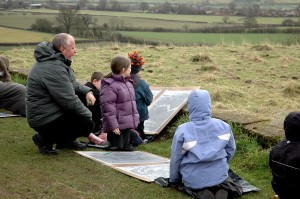Climate Change Education in Worcestershire Schools

Originally appears in the Fall 2010 issue
Worcestershire is an English county with a population of around 560,000, where a mix of urban and rural, towns, villages, farms, woods, meadows and patches of heath lie on the south-western edge of Birmingham, one of our major conurbations. Cut through by a major motorway and the rivers Severn and Avon, the mountains of Wales can be seen from the hills in the west of the county. Like many other regions, the county has seen major job losses in some areas, such as the closure of the Rover car company, and yet is also identified as having strengths around the development of new technology. Since the Rio Earth Summit in 1992, the County Council has developed a community leadership role to meet the challenges of sustainable development and more recently climate change. This has been extended to work with the 246 schools that it supports.
The County Council was recently awarded Beacon Status for its work on climate change in 2008-91, a significant part of which was the work going on in schools. Receiving the award necessitated a subsequent sharing of our practices with local education authorities throughout the country. In Worcestershire, there is now a commitment to both look at mitigating the effects of climate change (through reducing CO2 emissions associated with both county council operations and the county as a whole), and adapting to the impacts of climate change that are with us now and as they develop in the future. Increased frequency and intensity of flooding has become one major issue in the county over the past ten years.
This content is restricted to subscribers only.
If you are not yet a subscriber, please consider taking out a subscription here.
If you are an existing subscriber, kindly log in or contact us at info@greenteacher.com for more information.





